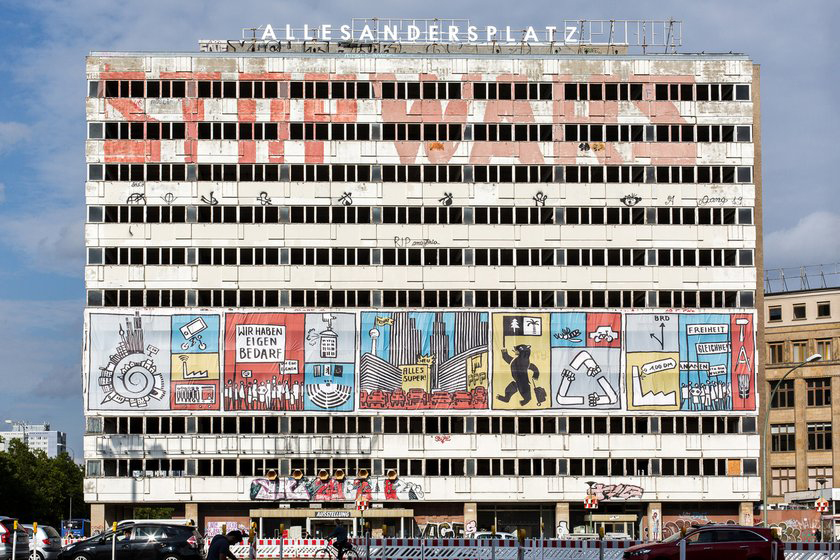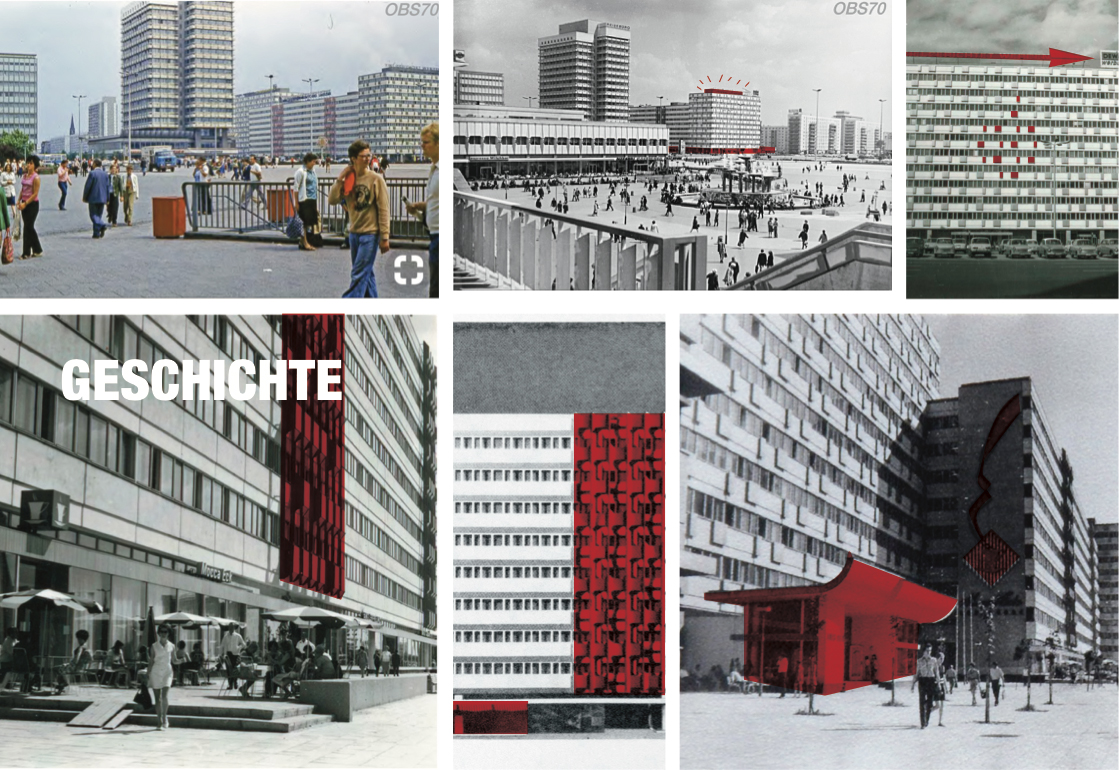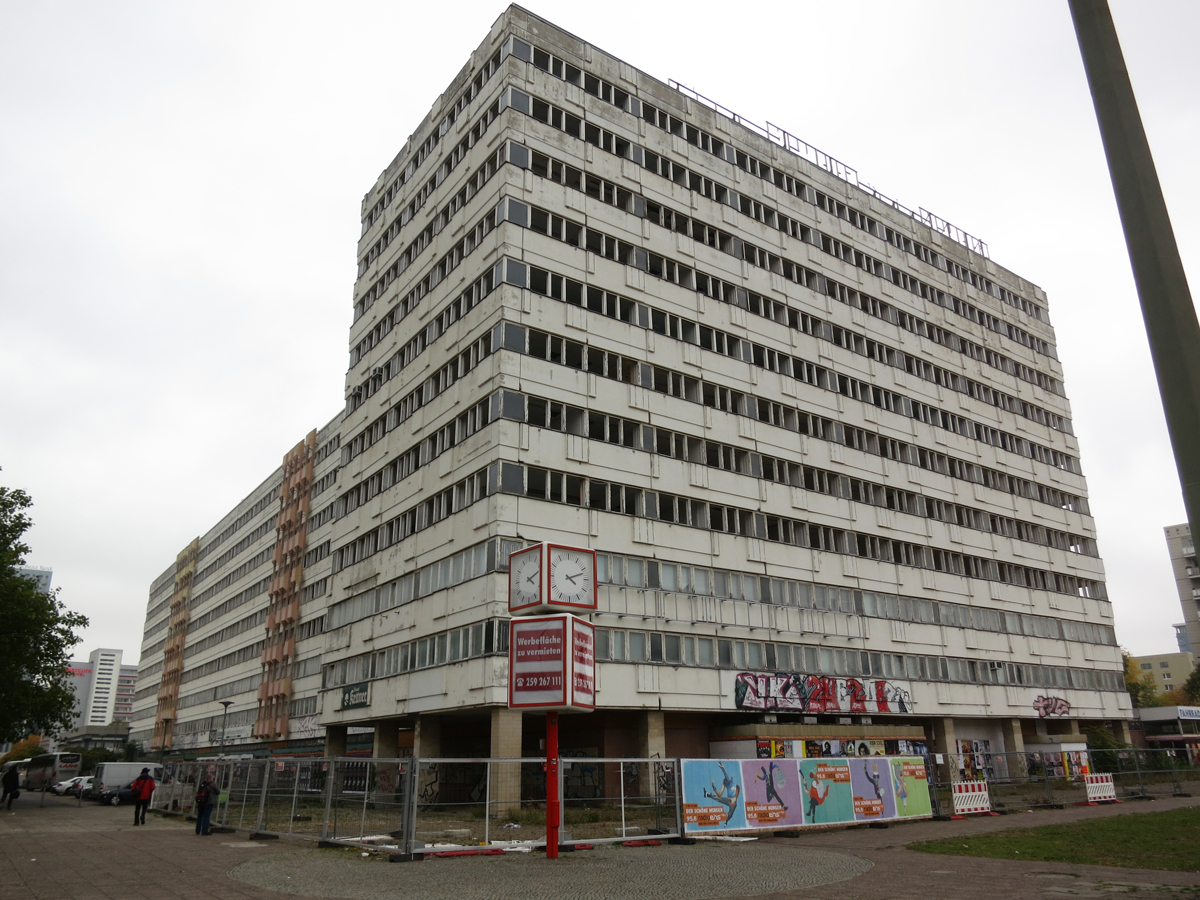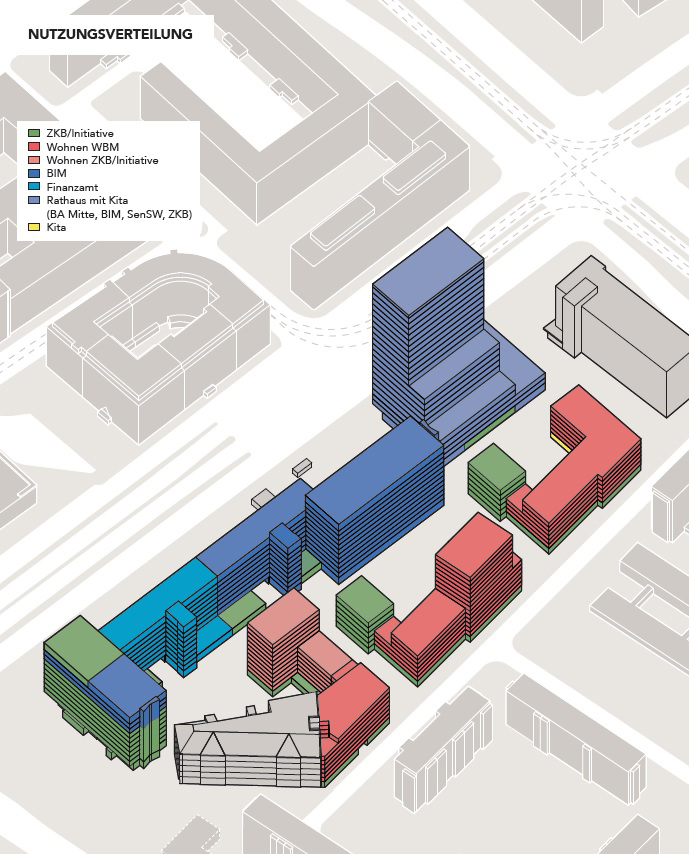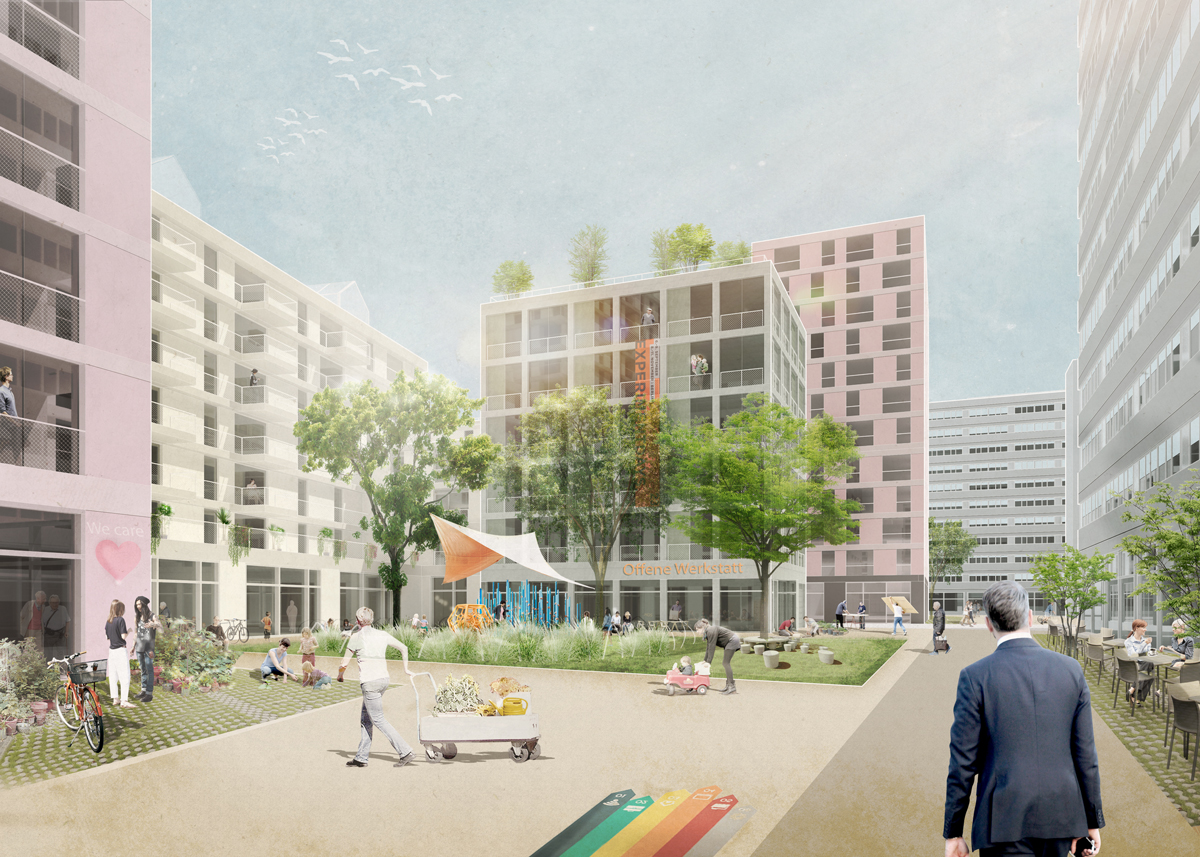
We are celebrating 15 years — and counting — of stories that are deeply researched and deeply felt, that build a historical record of what the city has been.
We are celebrating 15 years — and counting — of stories that are deeply researched and deeply felt, that build a historical record of what the city has been.
The stark visual impact of a vacant lot or empty building can be a blank canvas on which to project different agendas: a diatribe against the supposed ills of city life, a celebration of its supposed grit — or simply a business opportunity. New York City is no stranger to these dynamics. Yet far afield from the five boroughs, in the center of Berlin, a partnership between artists, planners, architects, cultural workers, and the municipal government is upending familiar tropes around “urban decay.” Following a direct action staged at an abandoned government complex near the eastern bank of the Spree River — originally conceived as a symbolic protest against rampant gentrification and privatization in the German capital — a group of activists have found themselves turned accidental planners for an ambitious redevelopment scheme that will rescue financially valuable land from the city’s white-hot property market, and open it up for largely social uses. What once seemed like a utopian long-shot is now an active construction site with experimental art studios and public planning workshops occupying the ground floor of an otherwise deserted eleven-story building; raised garden beds in the center of an open concrete plaza; and other community-driven spaces, including a theater and a bar, with affordable and supportive housing and offices for public workers to come.
If you’re thinking that this all sounds too good to be true, you wouldn’t be alone. In May 2021, a group of New York-based Robert Bosch Foundation fellows decided to go see the Haus der Statistik for themselves. Below, Liz Bieber, Oksana Mironova, and Kerensa Wood — with the help of Konrad Braun and Felix Marlow (two Berliners involved in the project) — describe what it looks and feels like to keep public land public, and to transform a staid site of official business into a hub for envisioning an entirely different kind of city. On the heels of a successful referendum to municipalize more than 200,000 apartments owned by corporate landlords, activists in more municipalities may start emulating the radical examples set in Berlin. We know we’ll be watching.
Arriving in Alexanderplatz on a warm evening in May 2021, we felt a bit disoriented by the maze of shopping malls, hotels, and offices surrounding the TV Tower, one of the most recognizable landmarks in former East Berlin. We were searching for a deceptively empty-looking building located at the start of Karl-Marx-Allee, one of Berlin’s stately boulevards.
The Haus der Statistik (HdS) immediately stood out among its surroundings. As we approached the building, we caught a glimpse of the massive graffiti screaming “STOP WARS” across its eleven-story façade. Visible, too, were other interventions, including art collective STATISTA’s altered “Allesandersplatz” sign — translating roughly to “Altogether Different Place” — and a temporary, two-story mural by image-shift and Steffen Schuhmann of anschlaege.de depicting recent struggles around Alexanderplatz’s redevelopment. After months of Zoom calls through Covid-19 lockdowns, three of us had come here from New York City to meet our two Berlin-based co-authors for the first time, in-person, to tour this once abandoned building and its surrounding complex, now teeming with activity.
Responding to the ongoing gentrification and displacement of lower- and middle-income people in Berlin, in 2015, a group of artists and activists staged an action declaring that HdS would become a site devoted to social uses. Against the odds, this action pushed the city’s government to purchase the site from the German federal government, securing a fate very different from that of its highly-commercialized neighbors. Today, some of the activists who were arrested for their guerilla demonstration have since formalized into a group known as ZUsammenKUNFT (ZKB), a play on the German words for “together” and “future.” Along with four city government bodies and other proponents of alternative urban development, ZKB are now co-developers of the approximately 500,000-square-foot property. The group’s participatory planning practices, headquartered inside a small building on the site called the “WERKSTATT,” invite Berliners to envision the future of HdS, while opening up parts of the building for use during implementation of the larger redevelopment project. In the midst of a multi-year construction timeline, and a global pandemic, HdS has allowed artists and activists to occupy the vacant ground floor space for their studios and workshops where they are able to test out ways to inhabit the site and build up a sustainable structure for self-organization.
As we walked around the L-shaped building into the site’s interior courtyard, we entered a community garden where neighbors were watering plants, volunteers were sharing beers, and curious passersby were wandering onto the site. On the other side of the garden, we came across an outdoor pavilion that hosts concerts, flea markets, and workshops throughout the summer. Around the corner, we entered one of the buildings, encountering a huge warehouse haphazardly divided by DIY partitions and doors into different sections filled with repurposed materials, vintage items, antique furniture, a clothing design studio, theater sets and costumes, manufacturing equipment, and a clothing donation area for the un-housed. This was the Haus der Materialisierung, home to the workshops of HdS’ “Pioneer Users,” artists and community organizations who use these spaces to work and experiment. Other, larger areas in the main HdS building house a movie theater with a small bar for screenings, donation centers for refugees, art exhibition spaces, and a community kitchen.
During our tour, we ran into Harry Sachs, one of ZKB’s co-founders. Harry describes how in the beginning the activists had long negotiations with the city. “Initially, we were told [co-development] wasn’t possible. Then we tried to convince them by showing the potential of the site. I mean, this site is not just for decoration — we can create uses that the city urgently needs. And here we have the space. At some point, it finally worked.” HdS’ future will include hundreds of new affordable housing units, government offices, thousands of square feet for arts and cultural workshops, studios, social spaces, a new town hall, and public open green space. These plans represent a radical departure from the market-driven approach that has defined Berlin’s planning and land use policy post-unification, speeding up gentrification through deregulation and public land dispositions favoring the highest bidder. In contrast, this redevelopment, designated a model project by the city, offers an increasingly rare vision of the urban core as a space for collectivity.
After the fall of the Berlin Wall in 1989, the newly unified city faced economic turmoil and rampant abandonment. In East Berlin, residential buildings built before World War II had been particularly neglected as East Germany’s modernist approach to urban development had focused instead on functionalist, prefabricated buildings constructed quickly to address the post-war housing shortage. In the 1990s, artists and musicians from Berlin and beyond began to expand their studios, galleries, and performance spaces into these cast-aside, older buildings.
At the same time, Berlin’s new municipal government pushed ahead with urban planning projects for the now unified city. Buildings and other East German state assets were quickly and chaotically privatized and sold off. The Kollhoff Plan, adapted in 1994, aimed to densify Alexanderplatz, surrounding it with skyscrapers. HdS briefly served as the office of the Stasi Records Agency, established after reunification to research GDR’s state security apparatus and to allow East Germans to access records collected on them by the Stasi. As part of the redevelopment plan, the HdS site was then slated to be privatized and rebuilt.
By the late 2000s — after years of abandonment, the privatization of a large portion of the city’s social housing stock, and near bankruptcy — Berlin faced a population boom and aggressive real estate investment. The city’s cultural cachet (informed by both West and East Berlin’s roles as sites of resistance in the 1970s and 1980s) was a central selling point. According to Harry Sachs, artist collectives that were aware of their role in the “urban renaissance” narrative would hide their work to avoid developers targeting their neighborhoods and claiming the artists’ cultural capital as new hot spots and sites for redevelopment.
In 2015, an artist collective called the Allianz bedrohter Berlin Atelierhäuser (“Alliance of Threatened Berlin Studio Houses,” or AbBA) staged their demonstration to prevent HdS’ sale and demolition. Members donned helmets and vests worn by construction workers, a common sight in Berlin, and hung an official-looking banner proclaiming the site as a space for arts, culture, and social use. A crowd attracted by the spectacle was serenaded by a choir. As told by Sachs, “the cops were fooled initially, but we were eventually arrested. On the drive to the police station, my arresting officer confided that he personally really liked this idea, even though what we did was illegal.”
The demonstrators’ action complemented a larger-scale, long-brewing revolt against privatization, rising rents, and the loss of Berlin’s cultural character to gentrification. The city’s nascent equitable urban development movement pushed the city to make public land disposition more transparent, directing a larger portion of it to the city’s state-owned housing companies. In parallel to the efforts at HdS, a group called Stadt von Unten (“Bottom Up City”) campaigned for social uses at Dragoner Areal, another large, publicly-owned abandoned site in the adjacent, rapidly gentrifying neighborhood of Kreuzberg. Stadt von Unten has called for 100 percent affordability and self-management for the site.
Following the arrests in Alexanderplatz, the local media picked up the story and the demonstrators garnered support from the public, as well as from key elected officials. The group hosted a series of open meetings where Berliners came together to envision a future for HdS. With this support, and a new governing coalition (made up of center-left Social Democrats, Socialists, and Greens) voted into office in 2016 with a mandate to address gentrification that explicitly cited HdS as a development model, the demonstrators entered into negotiations with the government over the future of the site.
To engage in formal negotiations, the loose network of artists joined forces with planners, architects, cultural workers, and the city government to create ZUsammenKUNFT (ZKB). With the tides turning against the sale of publicly-owned property to private developers, the city government and agencies found common ground with this cooperative. ZKB entered into a partnership (officially known as Koop5) with Berlin’s urban development department, the local district leadership, a state-owned housing company, and the city’s real estate management office. The presence of a community-based, non-governmental organization as an equal partner on a development project of this scale is unique for Berlin.
In September 2018, Koop5 began hosting on-site workshops to determine the planning framework for the site, which will include space for art, culture, social affairs, education, and affordable housing. In a proposal developed by the architecture firm Teleinternetcafé and landscape architects Treibhaus, the project will be built around three central “city rooms” that will provide public space at the heart of the site. The site will include 7- to 15-story residential buildings, with 50 percent deeply affordable and 50 percent below-market social housing units. The ground floors of these buildings, along with two additional “experimental buildings,” will house art, culture, education, and small businesses. Finally, a new high-rise office building, with space for the Town Hall for the Mitte borough and other public-serving uses will be constructed at the northern end of the site. The final design will include roof gardens and communal terraces, expanding usable public space on the site.
Given the long project timeline, and the desire to quickly make it accessible to Berliners, Koop5 decided to encourage use of the site during the planning and construction phases. Since 2019, artists, activists, and civic organizations have been able to rent ground floor spaces at HdS. ZKB allocates space based on need, and rents are negotiated on an individual basis. Rents average to three-to-four euro per square meter, deeply below the market rate for the neighborhood.
Known as “pioneer users,” the group of artists and organizations using HdS during this interim period are playing an active role in shaping the site. They have done extensive renovations to make these formerly vacant spaces, which are largely unfinished and without direct access to certain utilities, work for them. Sun Seeker, a nonprofit sustainable urban agriculture organization, runs a mobile, educational community garden in the center of HdS. David Heim of Bühnen, an experimental theater collective, recounts spending “endless hours renovating the whole place . . . turning from artists into construction workers . . . but after a year, it’s working really well.” Despite the challenges of bringing hundreds of people into a vacant site to work, perform, and create, the experiment has been working. These affordable, flexible spaces have supported the creation of new organizations, like Sun Seeker, and have provided stability for existing organizations such as Bühnen, who landed at HdS after being evicted from their prior space. Community gardening and theater performances have brought Berliners into HdS encouraging people to use the site, before and during the pandemic. Sun Seeker’s programming, in particular, has drawn in HdS’s neighbors, including elderly East Germans who have lived in nearby cooperatives for more than 40 years.
The construction phase is planned to begin in late summer of next year, with preparations for the first set of residential buildings developed by the city-owned development company underway. As the Koop5 begins transitioning from the planning to construction phase, changes are afoot for the pioneer users: some will relocate to shipping containers surrounding the site, allowing for the continuation of site use even as construction gets underway. As HdS’ uses change, one of ZKB’s roles within the Koop5 is to advocate and plan for the long-term sustainability and independence of the current and future pioneer users. In this experimental partnership, ZKB represents these users as the group reconciles project financing, building programming, design issues, and self-governance. The partnership will be codified in the form of a public-civic real estate company, which will be responsible for the long-term stewardship of the site.
As Berlin looks toward a long recovery after the pandemic, Koop5’s members have been negotiating the project’s economic sustainability and independence for all users, especially the organizations and artists who are under immense market pressure in Berlin. ZKB will have a long-term ground lease to portions of the site that will ultimately house permanent social uses, while the city’s real estate management agency will keep the ownership rights to the land. ZKB’s ultimate goal is to create a replicable partnership model between the public sector and civil society. Through the group’s engagement with multiple public partners, ZKB has been working to ensure civil society is represented in high-level decision making and to build trust in projects oriented around community (rather than market-driven) uses. For example, it has pushed for city agencies to develop greater flexibility around budgeting and public procurement: processes that work for for-profit developers do not necessarily work for small arts collectives. At the same time, the project has also pushed ZKB and engaged pioneer users to navigate and understand bureaucracy and Berlin’s complex public agency culture. Harry Sachs hopes that the projects will make public agencies more open to this type of cooperation with civil society groups in the future, a practice that is not currently common in Germany.
Some of HdS’ successes are site-specific and may be difficult to replicate. The site’s sheer size and preservation of the existing main building has provided a unique flexibility for ZKB to maintain a permanent on-site presence for artists, activists, and civic organizations to use the space long before the project is complete. Programming helped familiarized neighbors with the project, building a constituency for HdS. At the same time, HdS’ users see the potential for the project to influence the city’s approach to development more broadly. For Hannah Rumstedt of Bühnen, HdS can serve as a model for a new type of approach to longer-term changes which continue to shape cities everywhere, especially post-Covid-19, such as the waning demand for traditional office space. More broadly, Hannah sees HdS’ commitment to keeping people engaged through sometimes messy participatory processes as an alternative to market-led development.
An alignment of multiple factors, including the swelling of public opinion against gentrification, long-term organizing, and the election of a leftist governing coalition created the environment for activists and artists to successfully lay claim to the HdS site. Despite these unique local circumstances, there are core lessons in the HdS experiment that resonate beyond Berlin: community groups can have more agency in the development process, and governments can plan for and support a broader mix of social uses on public (and even private) land in cities — even expensive ones.
These takeaways are important for groups in Berlin and many other cities which have found openings to challenge aggressive, financialized real estate markets impacted by the pandemic. In New York, adapting HdS’ approach could draw on aspects of existing community development and organizing model. The St. Nicks Alliance, for example, has leveraged more than 35 years of organizing (as part of a larger neighborhood-based consortium, Greenpoint Renaissance Enterprise Corporation) to transform the former Greenpoint Hospital in Brooklyn, closed since 1982, into affordable and supportive housing. Similar to ZKB’s trajectory, this project, undertaken in collaboration by nonprofit, private, and public partners, also saw the long-term professionalization of a community development group as a way to work with the city government. Efforts could also draw on ZKB’s origins in direct action. In Philadelphia, an occupation led by activists eventually convinced the city’s housing authority to turn over 50 vacant buildings to a new community land trust. The example of HdS can even help inspire future projects, like the nascent effort by the Western Queens Community Land Trust to place a 600,000-square-foot former Department of Education building in Long Island City under community stewardship, creating space for manufacturing, art, and community uses. In a time where cities are reflecting on how to deal with the realities made stark by multiple crises, the experiment of HdS helps raise questions, and perhaps upend expectations, about what development looks like in the urban cores of the developed world. Can we afford to envision much bolder alternative futures for these cities?
The views expressed here are those of the authors only and do not reflect the position of The Architectural League of New York.
